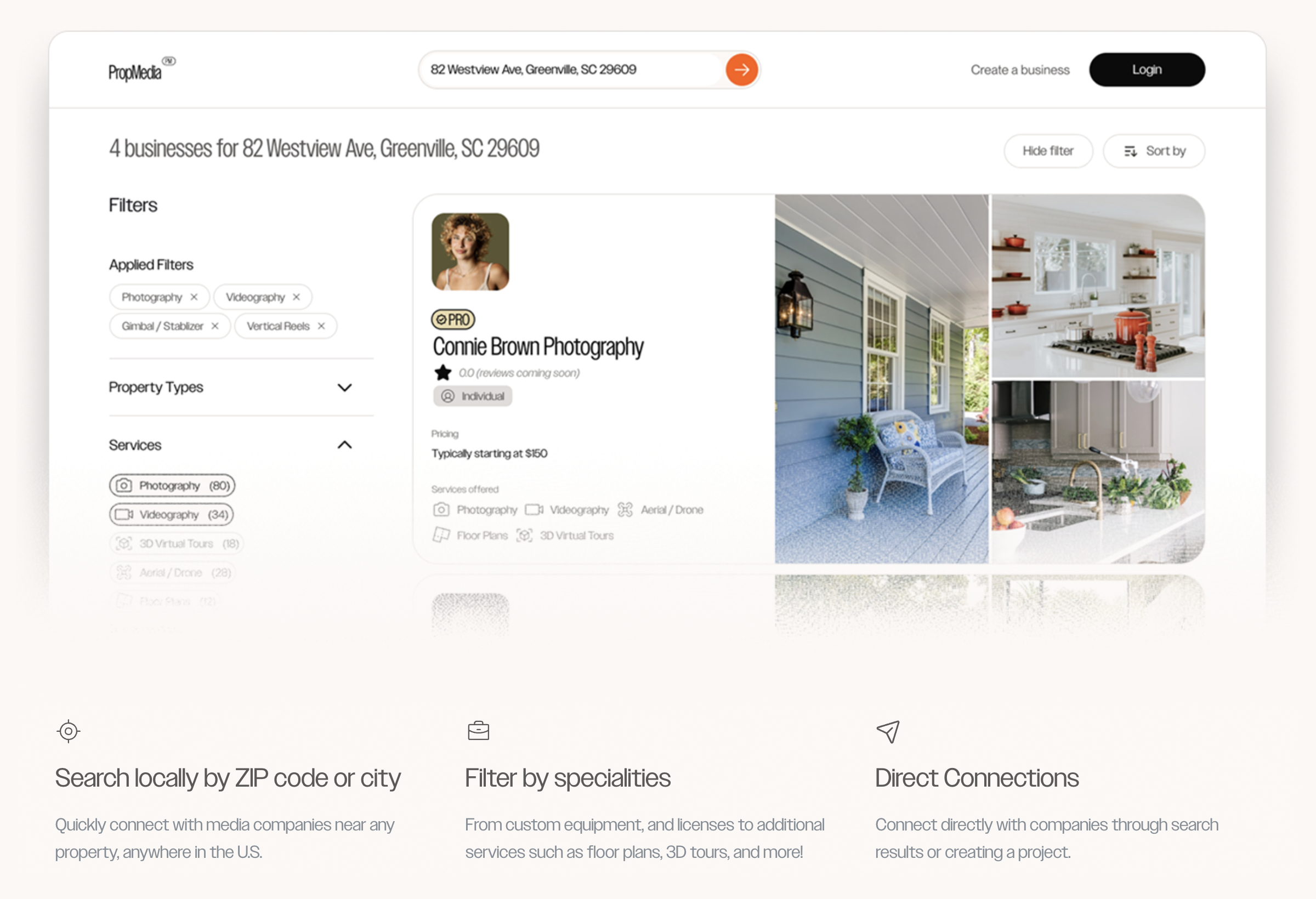Stop Renting Your Reach: Platform Economics in Real Estate Media
High-quality visuals are now non-negotiable in real estate. From listing photos and drone footage to 3D tours and social-first video, the way a property is presented can shape its market trajectory. Yet the professionals who create those assets have historically faced limited visibility, uneven pay, and fragmented pathways to steady work. A new wave of platforms is changing that dynamic—giving photographers more agency and giving real estate professionals more precision when sourcing talent. For broader context on consolidation and distribution power, see Real Estate’s Media Monopoly Is Taking Shape.
The Uneven Landscape Photographers Have Faced
For years, legacy networks acted as middlemen between agents and photographers. While they offered predictable volume, the tradeoff was often constrained rates and limited control over how and where photographers could showcase their capabilities. Generalist marketplaces also emerged, but their breadth came at the expense of depth—especially when a job required real estate-specific compliance, specialized equipment, fast turnarounds, or MLS-ready deliverables.
Demand Is Upgrading—Fast
Media is no longer a nice-to-have; it’s a strategic necessity across the value chain. Developers and investors use aerial documentation to track construction progress. Property managers and short-term rental hosts rely on floor plans and virtual tours to reduce turnover friction. Economic development councils showcase communities with drone footage and highly shareable reels. Meanwhile, the creator economy has lifted expectations for short-form, social-native content that performs on TikTok, Instagram, and YouTube.
Generalist Marketplaces vs. Real Estate-Focused Platforms
Generalist directories can be useful for quick searches, but they rarely solve real estate’s unique needs—from lockbox access and insured drone operations to 3D capture workflows and MLS formatting. On the other end of the spectrum, corporate ecosystems provide tight integrations around tours, floor plans, and listing distribution. Those closed loops can streamline delivery for agents, but they may limit the agency and pricing power of individual photographers.
Enter PropMedia: A Photographer-First Marketplace
Against this backdrop, PropMedia is a category-specific marketplace built for real estate. Originating from the team behind Pixlmob —a platform that connected photographers with editors and AI tools—PropMedia applies the same marketplace logic to matching Realtors with local media pros.

What makes it different? Precision. Photographers can highlight real estate-relevant credentials such as FAA Part 107 drone licensing, Matterport and similar 3D capture gear, short-form content capabilities, and access protocols like Supra / SentriLock. Search and filtering map to real-world needs, helping agents source exact skill sets without endless calls or text chains, while giving photographers visibility for the investments they’ve made in gear, training, and compliance.
Credibility and Workflow Fit
Industry programs like NAR REACH (run by Second Century Ventures) signal momentum and an orientation toward Realtor workflows. For agents, it suggests the platform is designed with industry needs in mind. For photographers, it points to potential future efficiencies—like smoother MLS handoffs and streamlined collaboration with brokerage tools.
From Local Shoots to Multi-Market Coverage
One early use case: an economic development council used PropMedia to source drone pilots across multiple states, activating local talent at scale while keeping work—and dollars—within the community. That kind of orchestration means a photographer in Milwaukee or Buffalo can be tapped for statewide or regional initiatives, expanding beyond a single ZIP code’s listings.
The ripple effects are significant:
- For photographers: More visibility, better alignment between skills and rates, and access to higher-value projects.
- For Realtors and developers: Faster discovery of specialized talent that’s already compliant and equipped.
- For communities: Stronger local economic impact by directing spend to nearby professionals.
The Bigger Trend: From Undervalued to Essential Partners
As real estate becomes more specialized and more digital, photographers are moving from commodity to core partner. Three forces are pushing this shift:
- Social media adoption: Agents need not just polished visuals, but platform-native content that can travel.
- Compliance and documentation: Drone operations, inspections, and progress tracking require licensed operators and clear record-keeping.
- Globalized marketing: Developers and investors increasingly target cross-border audiences with high standards for immersive media.
What’s Next: APBs, Integrations, and Choice
Expect more experimentation. Some startups are piloting interactive job boards and “all-points-bulletin” (APB) systems where agents post needs (“Tuesday at 10am in Dallas”) and vetted photographers respond. PropMedia has signaled it plans an APB system that collapses twenty phone calls into one streamlined request. Meanwhile, corporate players will deepen proprietary ecosystems, and generalist platforms will continue to prioritize breadth over specialization. The upshot for the market is more choice—and more leverage for professionals on both sides.
Conclusion: Toward a More Balanced Ecosystem
Real estate media is shifting from scarcity and underpayment to empowerment and opportunity. Category-specific marketplaces help photographers showcase unique skills and connect directly with agents, while enterprise ecosystems drive distribution and standardization. PropMedia’s real estate-first approach—paired with industry-minded partnerships—illustrates how the balance is changing. The winners will be those who lean into specialization, compliance, and speed, and adopt tools like Matterport.

